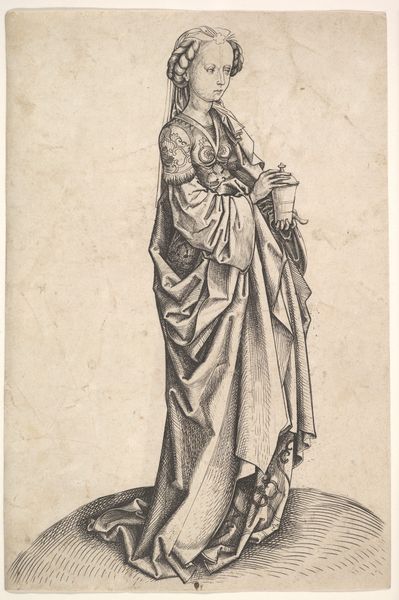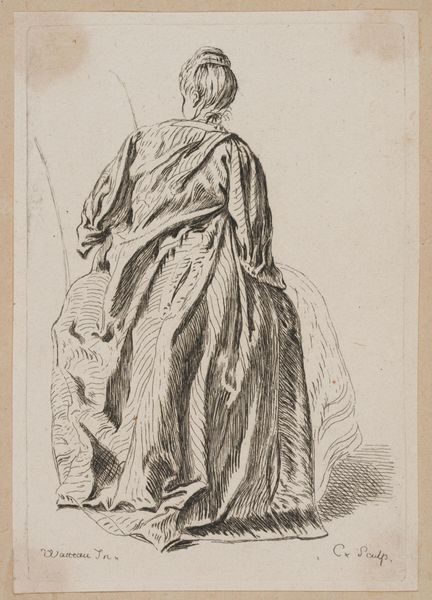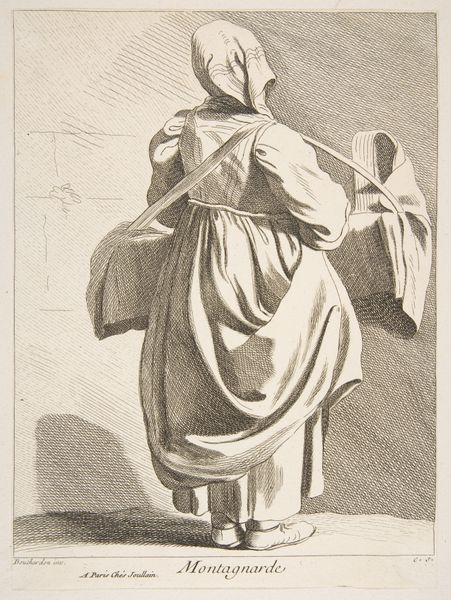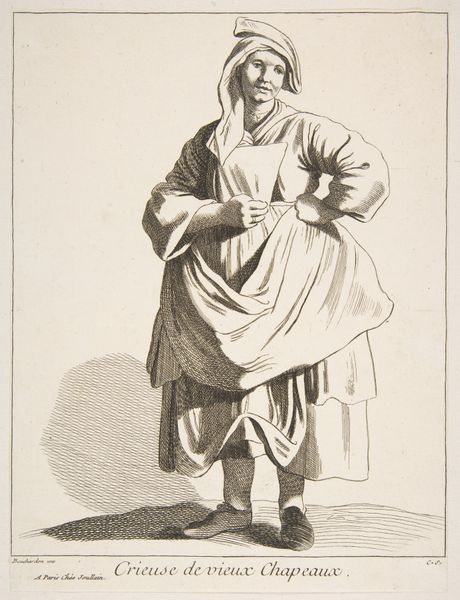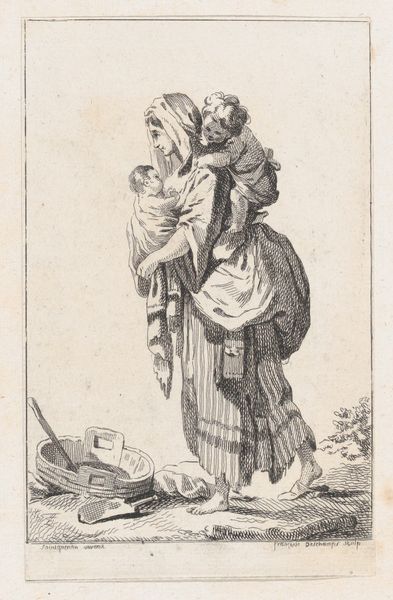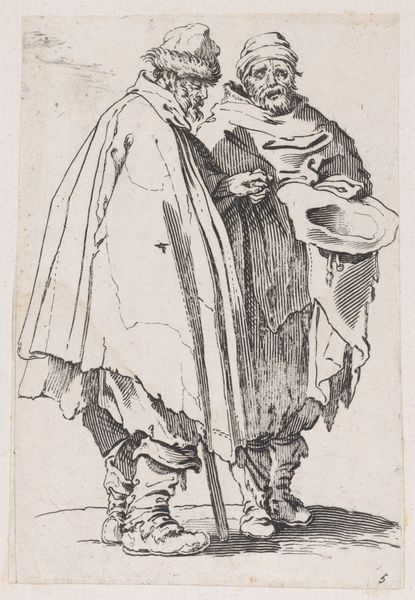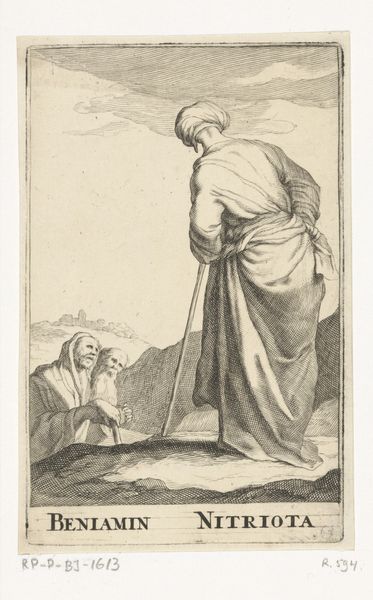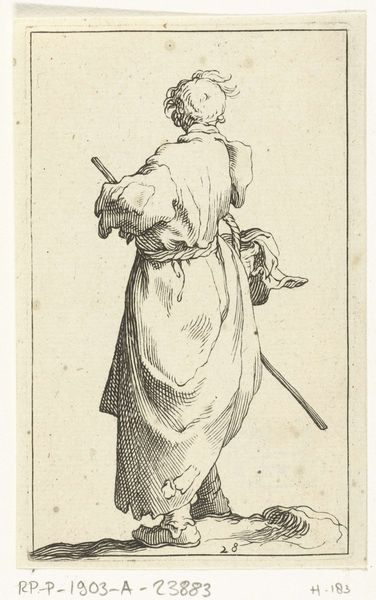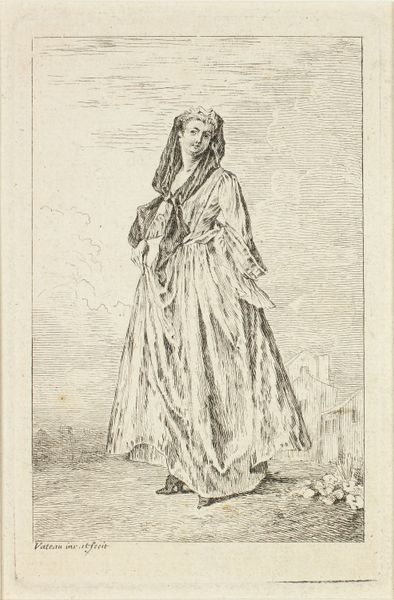
drawing, paper, pencil
#
portrait
#
drawing
#
caricature
#
paper
#
pencil drawing
#
pencil
#
portrait drawing
#
genre-painting
Dimensions: height 205 mm, width 151 mm
Copyright: Rijks Museum: Open Domain
Curator: This is "Boerenvrouw met een mand," or "Peasant Woman with a Basket," a pencil drawing on paper by François Philippe Charpentier, dating back to the late 18th or early 19th century. It’s part of the Rijksmuseum collection. Editor: She seems pensive, almost melancholic. There’s a simplicity to the line work that really captures a moment of quiet contemplation. The shading around her face and dress, coupled with her downturned gaze evokes such a sorrowful impression. Curator: Absolutely, and consider the context. Genre paintings like this often reflected broader societal attitudes towards rural life. The 18th century saw increased interest—and idealization—of the peasantry, but also anxiety around urbanization. Editor: The rendering of her garments—so loose and flowing—hint at the practical clothing required of laboring people. But do they depict dignity, or just emphasize class divisions in the period? Her expression, combined with the somewhat slumped posture, certainly leaves that open to interpretation. It makes you wonder about the unseen work, what burdens she carries—both literally, in that basket, and metaphorically. Curator: And yet there's also a tradition of portraying peasants as simple, honest folk. The question for me becomes, what purpose did this representation serve within the larger social framework? The art market's demands surely influenced how such subjects were visualized. These works were circulated among certain buyers. Editor: It does highlight the power dynamics at play when representing marginalized groups. A contemporary audience might even view this work through the lens of representation itself, questioning whose gaze is privileged. How do we move past stereotype? It isn't that it is not okay to create drawings or images of women but to analyze why the images or artworks are being produced. Curator: Exactly, the art is interesting within the world but can only survive through interpretation that challenges its context within contemporary society. Considering whose voice and image have been historically amplified remains ever crucial when contextualizing these works today. Editor: Agreed. Understanding the power of images, and who controls them, helps us not only appreciate the skill of Charpentier, but consider what isn’t being shown, and why. Curator: Precisely. Art serves as both a mirror reflecting society, and a window, offering perspectives onto its complex underpinnings, its issues. This particular image invites reflection on the power dynamics embedded within even the simplest scenes of everyday life. Editor: Ultimately, what stays with me is the woman's silence within the drawing. It speaks volumes and resonates. Thank you!
Comments
No comments
Be the first to comment and join the conversation on the ultimate creative platform.
